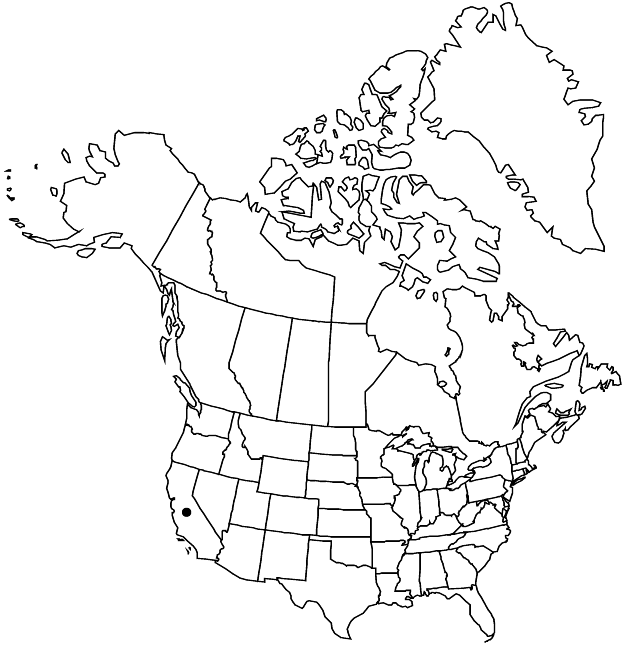Difference between revisions of "Eriogonum breedlovei"
Leafl. W. Bot. 10: 335. 1966.
FNA>Volume Importer |
FNA>Volume Importer |
||
| Line 24: | Line 24: | ||
|distribution=Calif. | |distribution=Calif. | ||
|discussion=<p>Varieties 2 (2 in the flora).</p><!-- | |discussion=<p>Varieties 2 (2 in the flora).</p><!-- | ||
| − | --><p>Eriogonum breedlovei is geographically isolated from the rest of the E. ochrocephalum complex, and the only member nearby is E. rosense, found at higher elevations of the Sierra Nevada. Both varieties of E. breedlovei are rare.</p> | + | --><p><i>Eriogonum breedlovei</i> is geographically isolated from the rest of the <i>E. ochrocephalum</i> complex, and the only member nearby is <i>E. rosense</i>, found at higher elevations of the Sierra <i>Nevada</i>. Both varieties of <i>E. breedlovei</i> are rare.</p> |
|tables= | |tables= | ||
|references= | |references= | ||
| Line 59: | Line 59: | ||
|publication year=1966 | |publication year=1966 | ||
|special status= | |special status= | ||
| − | |source xml=https://jpend@bitbucket.org/aafc-mbb/fna-data-curation.git/src/ | + | |source xml=https://jpend@bitbucket.org/aafc-mbb/fna-data-curation.git/src/8f726806613d60c220dc4493de13607dd3150896/coarse_grained_fna_xml/V5/V5_540.xml |
|subfamily=Polygonaceae subfam. Eriogonoideae | |subfamily=Polygonaceae subfam. Eriogonoideae | ||
|genus=Eriogonum | |genus=Eriogonum | ||
Revision as of 17:39, 18 September 2019
Herbs, matted, occasionally scapose, 0.2–1 × 0.8–1.5(–2) dm, glandular-puberulent and slightly pilose, greenish. Stems matted, with persistent leaf bases, up to 1/5 height of plant; caudex stems matted; aerial flowering stems rarely scapelike, erect to prostrate, slender, solid, not fistulose, 0.15–0.6(–0.8) dm, thinly to densely glandular-puberulent and slightly pilose. Leaves basal, fasciculate in terminal tufts; petiole 0.2–0.6(–1) cm, tomentose; blade broadly elliptic, 0.2–0.8(–1) × 0.2–0.4(–0.6) cm, densely white-tomentose abaxially, less so and olive green adaxially, margins plane. Inflorescences cymose-umbellate or cymose, 0.5–3 × 1–2.5 cm, rarely capitate, 1–1.3 cm; branches dichotomous, occasionally absent, pilose and glandular; bracts 3, scalelike, triangular, 1–1.2 mm. Peduncles erect to spreading, slender, 0.05–0.5(–1) cm, glandular or nearly glabrous, rarely absent. Involucres 1 per node, rarely 2-4, turbinate-campanulate, (2.5–)3.5–4 × 3.5–4 mm, rigid, glandular-puberulent or nearly glabrous; teeth 7–9, erect or slightly spreading, 1–1.5 mm. Flowers 2.5–3.5(–4) mm; perianth whitish to reddish, finely glandular-hairy abaxially; tepals connate proximally, slightly dimorphic, those of outer whorl obovate and obtuse, 1.5–2.3 mm wide, apex truncate or emarginate, those of inner whorl cuneate or spatulate, 0.7–1.3 mm wide, apex rounded; stamens exserted, 3–5.5 mm; filaments sparsely pubescent proximally. Achenes light brown, 2.5–3 mm, apex sparsely glandular.
Discussion
Varieties 2 (2 in the flora).
Eriogonum breedlovei is geographically isolated from the rest of the E. ochrocephalum complex, and the only member nearby is E. rosense, found at higher elevations of the Sierra Nevada. Both varieties of E. breedlovei are rare.
Selected References
None.
Key
| 1 | Scapes erect; inflorescences cymose-umbellate, rarely capitate | Eriogonum breedlovei var. breedlovei |
| 1 | Scapes suberect to prostrate; inflorescences cymose | Eriogonum breedlovei var. shevockii |
